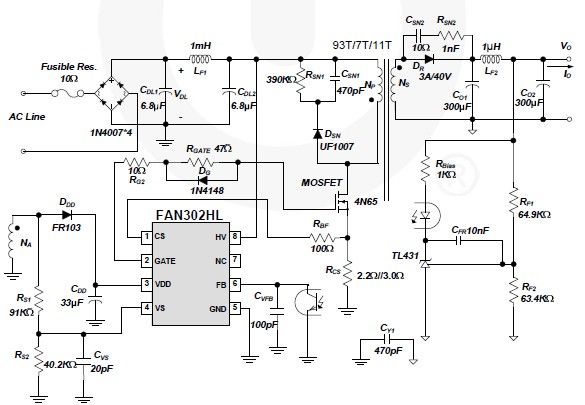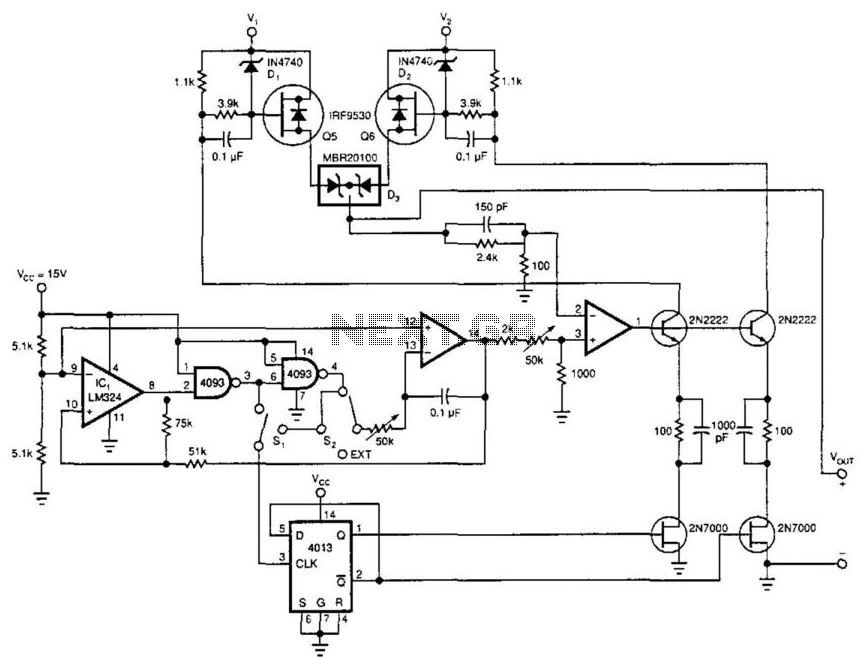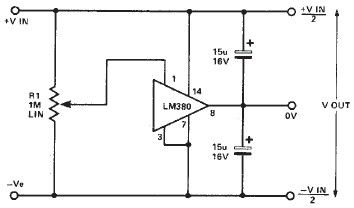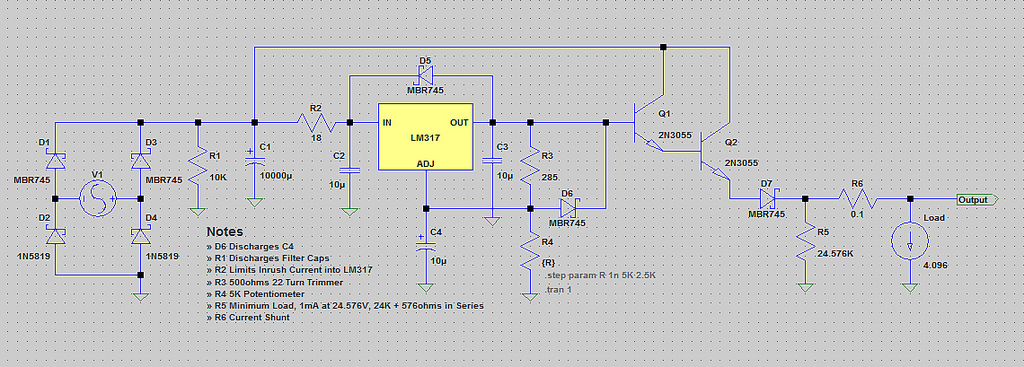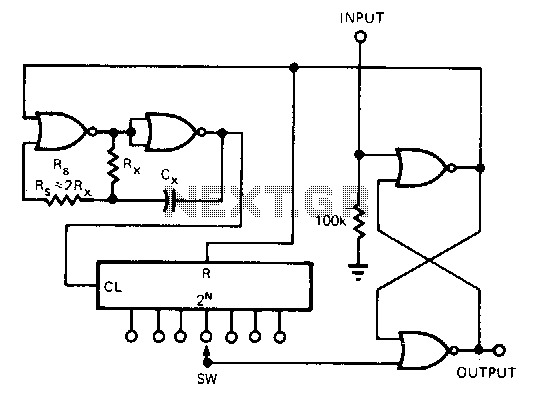
Adaptive configuration LM317 adjustable power supply
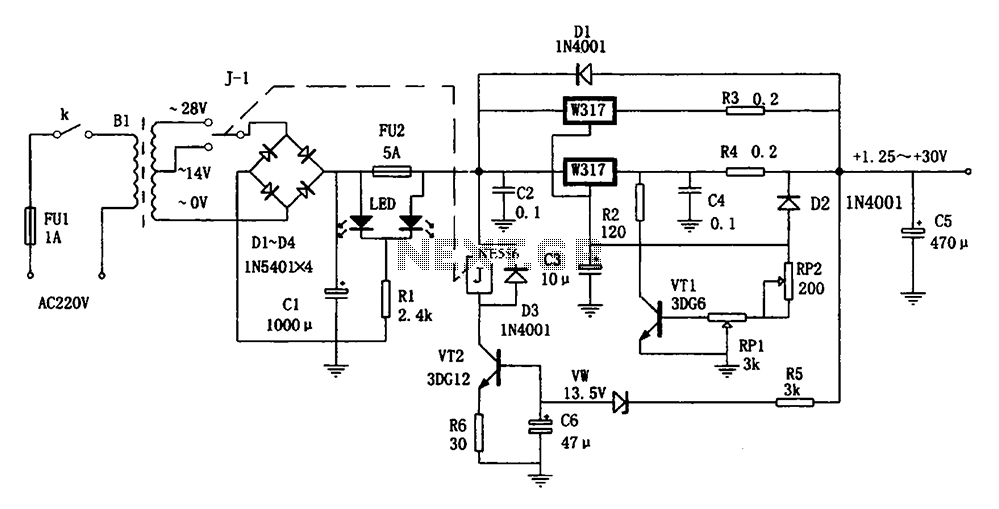
The adaptive adjustable power supply is illustrated in the accompanying figure. The power supply utilizes an LM317 regulator device, and an adaptive switching circuit that automatically adjusts the input voltage based on the output voltage level. This mechanism reduces the differential pressure between the input and output voltages, thereby minimizing the power consumption of the power supply itself. The components VT2, VD5, VW, R5, R6, C10, and relay K form the adaptive switching operation circuit. When the output voltage (Vo) is below 14V, VW does not reach the breakdown voltage and remains off, preventing current from flowing through VT2. Consequently, relay K remains in its default state, with contacts K-1 in a normally closed position, connecting to the transformer secondary 14V AC mains voltage regulator circuit. Conversely, if the output voltage exceeds 14V, VW breaks down, allowing VT2 to conduct. This activates relay K, causing contacts K-1 to switch to the 28V AC voltage regulator circuit. This configuration ensures that the input and output pressure does not exceed 15V. The output voltage of the circuit can be continuously adjusted from 1.25V to 30V, with a maximum output current of 3A.
The described adaptive adjustable power supply operates based on a feedback mechanism that optimally regulates voltage levels while reducing unnecessary energy loss. The LM317 voltage regulator is a key component, providing stable output voltage under varying load conditions. The switching circuit, consisting of the aforementioned components, plays a crucial role in determining the operational state of the power supply.
The operation begins with the relay K, which serves as a switch to alternate between two voltage regulation circuits. The presence of VW is critical; it acts as a voltage sensing element that determines whether the output voltage is below or above the threshold of 14V. When the output voltage is low, the relay remains inactive, allowing the circuit to draw power from the lower voltage (14V AC) source, which is efficient for minimal load conditions.
When the load increases and the output voltage rises above 14V, VW conducts, triggering VT2 to allow current flow. This action energizes relay K, switching the circuit to the higher voltage source (28V AC). This transition is smooth and automatic, ensuring that the power supply can handle varying load demands without manual intervention.
The design of the power supply emphasizes efficiency and adaptability, making it suitable for a range of applications where adjustable output voltage is required. The continuous adjustment feature offers versatility, enabling users to set the output voltage precisely as needed, whether for powering electronic devices, testing circuits, or other applications requiring stable voltage levels. The capability to deliver up to 3A of current further enhances the utility of this power supply in various electronic projects. As shown in FIG adaptive adjustable power supply. The power supply to the LM317 regulator device, adaptive switching circuit automatically switches the input voltage according to the output voltage level to reduce the input and output voltage of the differential pressure, reduce the power consumption of the power supply itself. Wherein VT2, VD5, VW, R5, R6, C10 and the relay K constitute adaptive switching operation circuit, when the output voltage Vo is lower than 14V, VW due to insufficient breakdown voltage is turned off, no current flows through, VT2 end, K does not move, the contacts K-1 is normally closed state, the transformer secondary 14V AC mains voltage regulator circuit.
Conversely, when the output voltage is greater than 14V, VW breakdown, VT2 conduction. K was electric, K-1 action, access to the 28V AC voltage regulator circuit. Thus ensuring the input and output pressure of no more than 15V. The output voltage of the circuit is 1.25 ~ 30V continuously adjustable, the maximum output current of 3A.
The described adaptive adjustable power supply operates based on a feedback mechanism that optimally regulates voltage levels while reducing unnecessary energy loss. The LM317 voltage regulator is a key component, providing stable output voltage under varying load conditions. The switching circuit, consisting of the aforementioned components, plays a crucial role in determining the operational state of the power supply.
The operation begins with the relay K, which serves as a switch to alternate between two voltage regulation circuits. The presence of VW is critical; it acts as a voltage sensing element that determines whether the output voltage is below or above the threshold of 14V. When the output voltage is low, the relay remains inactive, allowing the circuit to draw power from the lower voltage (14V AC) source, which is efficient for minimal load conditions.
When the load increases and the output voltage rises above 14V, VW conducts, triggering VT2 to allow current flow. This action energizes relay K, switching the circuit to the higher voltage source (28V AC). This transition is smooth and automatic, ensuring that the power supply can handle varying load demands without manual intervention.
The design of the power supply emphasizes efficiency and adaptability, making it suitable for a range of applications where adjustable output voltage is required. The continuous adjustment feature offers versatility, enabling users to set the output voltage precisely as needed, whether for powering electronic devices, testing circuits, or other applications requiring stable voltage levels. The capability to deliver up to 3A of current further enhances the utility of this power supply in various electronic projects. As shown in FIG adaptive adjustable power supply. The power supply to the LM317 regulator device, adaptive switching circuit automatically switches the input voltage according to the output voltage level to reduce the input and output voltage of the differential pressure, reduce the power consumption of the power supply itself. Wherein VT2, VD5, VW, R5, R6, C10 and the relay K constitute adaptive switching operation circuit, when the output voltage Vo is lower than 14V, VW due to insufficient breakdown voltage is turned off, no current flows through, VT2 end, K does not move, the contacts K-1 is normally closed state, the transformer secondary 14V AC mains voltage regulator circuit.
Conversely, when the output voltage is greater than 14V, VW breakdown, VT2 conduction. K was electric, K-1 action, access to the 28V AC voltage regulator circuit. Thus ensuring the input and output pressure of no more than 15V. The output voltage of the circuit is 1.25 ~ 30V continuously adjustable, the maximum output current of 3A.
